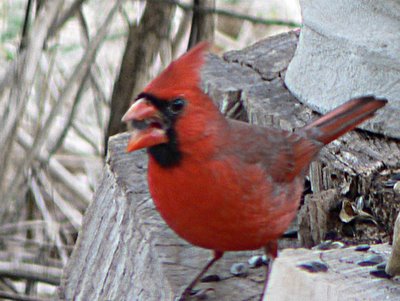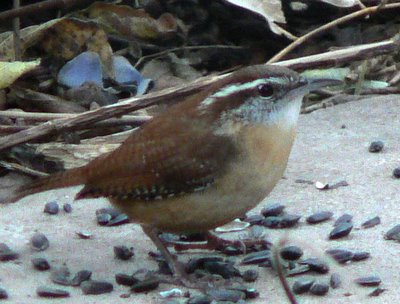Or then again maybe not. The movie Wild Parrots of Telegraph Hill, which I saw a few months ago, very much anthropomorphized the birds--but it seemed to work. You believed, or at least I believed, that the parrots were kind of like humans, but with wings and a fear of hawks.
I haven't seen the penguin movie.
But when I watch the small birds eating the sunflower seeds I put out, or the grackles and crows of the neighborhood, or the whitewing and mourning doves who seem to make up for a certain avian dimwittedness with exceptional speed of flight, they all seem like they must be profoundly different from us in the way they look at the world.
But of course I really can't know.
So when I got this camera that has a 12x telephoto, I found myself taking pictures and enlarging them, when I can, so that I see the birds much as another bird the same size would see them. Often that means pushing the enlargement past the usable resolution. These photos suffer from that. But on the other hand, if you look at them full size, they give a a view of the bird from a perspective I find interesting, maybe as another wren, or titmouse, or cardinal might see them.
I find it strange. And a little unsettling.
Cardinals are the bullies of my little feeding platform, maybe because they are bigger than any of the other birds drawn to the birdseed I put out. This one is eating a sunflower seed.

Titmice, on the other hand are shy and arboreal, reluctant to drop down to ground level. But they are sly and quick, and they seem to have a plan before they make their move. This tufted titmouse is gonna drop, grab a sunflower seed, and then it will be outa there, back up in the high branches of the pecan tree.

Carolina wrens get down on the ground and down in the leaves and low branches. They are not intimidated by other birds, and will occasionally drive away sparrows if they sparrows get too close. The feed by themselves, at least at this time of year.

(click to enlarge)
No comments:
Post a Comment